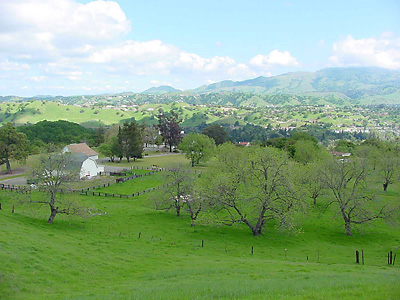Eugene O’Neill National Historic Site, in Danville, California, was the home where O’Neill, perhaps the greatest American playwright, wrote his final and most successful plays. O’Neill received the Nobel Prize for literature in 1936 and Pulitzer Prizes for four of his plays, Beyond the Horizon in 1920; Anna Christie in 1922; Strange Interlude in 1928; and Long Day’s Journey into Night in 1957, after his death.

In 1937, O’Neill purchased land in the remote hills of San Francisco’s East Bay using the cash award from his Nobel Prize. He built Tao House on that land. O’Neill and his wife, Carlotta, named the house for their interests in Eastern philosophy and Asian art. The house combines Spanish architecture with Chinese furnishings.
The O’Neills lived at Tao House from 1937 to 1944. Works written by O’Neill while at Tao House include The Iceman Cometh (written in 1939), Long Day’s Journey into Night (written from 1939 to 1941 and first performed in 1956), and A Moon for the Misbegotten (written from 1941 to 1943 and first performed in 1957).
Visitors to the site can tour the house, which includes some of the original furniture owned by O’Neill and his wife. O’Neill’s study also contains a number of the books O’Neill owned. The Eugene O’Neill Foundation, Tao House, maintains a research library in a nearby building. The foundation’s large collection includes manuscripts, photographs, playbills, O’Neill’s original collection of phonograph records, and literary papers.
Tao House became a national historic site in 1976. The National Park Service maintains and operates the site. The Eugene O’Neill Foundation, Tao House, coordinates artistic and educational programs.
Reservations are required to visit the site. The site is located on a private road, and the only access for visitors is by a National Park Service van. The van provides the short ride to and from the site at no charge.
